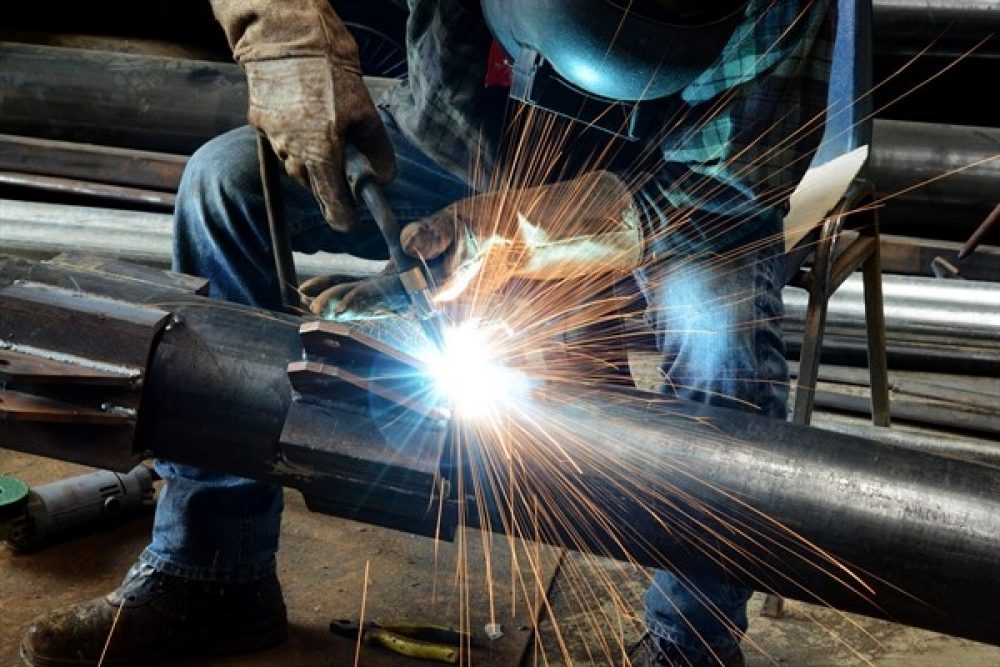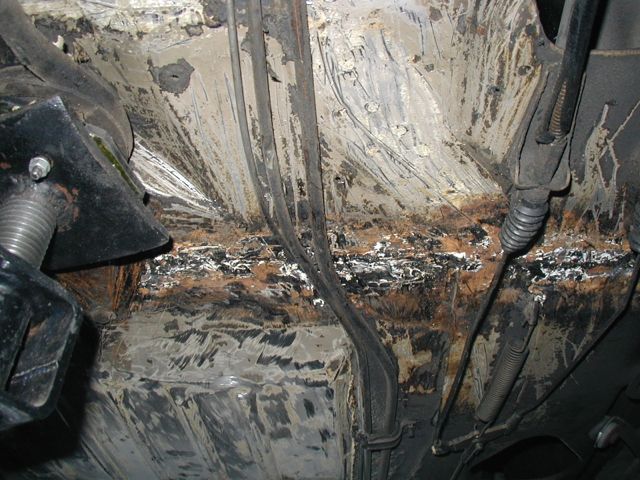All Concerning Welding: Key Insights Into Techniques and Finest Practices for Success
Welding incorporates a range of strategies, each matched for specific products and applications. Recognizing these techniques, such as GMAW, SMAW, and TIG, is necessary for accomplishing optimal outcomes. Additionally, the ideal tools and safety and security techniques can not be forgotten. As preparation and troubleshooting play critical functions in the welding procedure, understanding these aspects can considerably boost the high quality of the end product. What are the crucial elements that guarantee an effective weld?
Understanding Different Welding Methods
Welding techniques encompass a variety of methods, each fit to details applications and materials. Among the most typical techniques are Gas Metal Arc Welding (GMAW), Shielded Metal Arc Welding (SMAW), and Tungsten Inert Gas Welding (TIG) GMAW, additionally called MIG welding, is prominent for its rate and adaptability, making it optimal for thin materials. SMAW, or stick welding, is preferred for its simplicity and effectiveness in outdoor atmospheres, particularly with thicker steels. TIG welding supplies accuracy and control, making it suitable for elaborate job and non-ferrous steels (Montana Mobile Welding and Repair Belgrade). Each technique has its one-of-a-kind benefits and factors to consider, enabling welders to choose the most effective technique based upon the job's needs, material kind, and preferred results. Comprehending these methods is important for successful welding
Important Welding Devices and Devices
While numerous welding techniques call for certain skills, the right tools and devices are similarly crucial for accomplishing high quality outcomes. Important welding equipment includes welding devices, which differ depending upon the strategy-- such as MIG, TIG, or stick welding. Protective gear, including safety helmets, aprons, and handwear covers, assurances security and convenience during the process. On top of that, clamps and fixtures assist secure materials in location, guaranteeing accuracy in welds. Consumables like welding poles, wire, and securing gas are additionally important elements that affect the quality of the weld. Tools such as mills and cutters promote surface area prep work and post-weld finishing, adding to a professional result. Purchasing high-grade equipment eventually enhances the efficiency and effectiveness of welding tasks.
Safety Practices in Welding
Correct safety practices are essential in the welding sector to protect employees from potential threats. Welders must put on ideal personal protective equipment (PPE), including helmets with correct shading, handwear covers, and flame-resistant clothing. Ample air flow is essential to minimize direct exposure to unsafe fumes and gases produced during the welding process. Furthermore, employees must be educated in the proper handling of welding tools to protect against accidents. Fire precaution, such as keeping combustible products away from the welding location and having fire extinguishers conveniently available, are essential. Normal inspections of devices and work spaces can help recognize prospective threats before they bring about accidents. By sticking to these safety and security techniques, welders can develop a much safer working atmosphere and decrease threats linked with their profession.
Readying Materials for Welding
Preparing materials for welding is an important step that significantly affects the high quality and integrity of the end product (Montana Mobile Welding and Repair Belgrade). Proper preparation involves cleaning up the surface areas to eliminate impurities such as oil, corrosion, and dirt, which can jeopardize the weld. Methods such as grinding, sanding, or making use of solvents are typically used to achieve a tidy surface. In addition, guaranteeing that the materials fit with each other snugly is important; spaces can lead to weak welds. It's likewise essential to take right into account the placement and positioning of the parts, as this will impact the convenience of welding and the last outcome. Ultimately, selecting the ideal filler product and ensuring compatibility with the base steels is essential for attaining strong, long lasting welds
Tips for Getting High-Quality Welds
Achieving premium welds needs attention to information and adherence to finest methods throughout the welding procedure. Proper joint prep work is essential, ensuring surfaces are totally free and tidy from impurities. Picking the ideal filler product and welding technique based on the base metals is important for perfect bonding. Keeping regular travel speed and angle while welding can stop flaws and advertise uniformity. Furthermore, regulating heat input is vital; extreme warm can cause bending and compromised joints. If required, routinely inspecting the welds throughout the process enables for prompt adjustments. Utilizing suitable post-weld treatments, such as cleaning and tension alleviation, can boost the durability and honesty of the weld, eventually guaranteeing a successful outcome.
Fixing Typical Welding Issues
Welding typically provides difficulties that can influence the top quality and honesty of the final item. Usual issues such as porosity, irregular weld grains, and overheating can develop, each calling for certain troubleshooting methods. Comprehending these issues is necessary for welders to enhance their skills and attain perfect outcomes.
Porosity Issues Described
Although porosity can often be ignored, it stays a vital concern in welding that can jeopardize the integrity of a finished item. Porosity describes the visibility of tiny gas pockets within the weld bead, which can lead and compromise the joint to premature failing. This trouble usually arises from pollutants, moisture, or incorrect protecting gas protection throughout the welding process. To reduce porosity, welders ought to validate that the base materials are clean and completely dry, use suitable shielding gases, and keep constant welding parameters. Regularly examining the equipment and setting can also aid recognize possible problems prior to they materialize in the weld. Resolving porosity efficiently is essential for achieving strong, long lasting welds that meet quality requirements.

Inconsistent Weld Beans
Inconsistent weld beads can substantially affect the high quality and stamina of a finished product. site here Various variables contribute to this issue, including inappropriate traveling rate, inaccurate amperage setups, and irregular electrode angles. When the welder relocates as well quickly, a bead may appear slim and do not have penetration, while moving as well gradually can create extreme build-up. In addition, utilizing the incorrect amperage can result in either damaging or too much spatter, both of which compromise weld stability. The welder's technique, redirected here such as inconsistent torch movement, can likewise bring about irregular grain appearance. To minimize these troubles, welders need to concentrate on maintaining constant, regulated motions and ensuring appropriate tools settings to achieve uniformity in their welds. Consistency is crucial to achieving solid and reliable welds.
Overheating and Bending Issues
Excessive warmth during the welding procedure can result in considerable getting too hot and warping problems, impacting the architectural honesty of the workpiece. These issues typically materialize as distortion, which can compromise positioning and fit-up, making more setting up testing. Variables adding to overheating consist of the option of welding specifications, such as voltage and travel rate, in addition to the kind of product being bonded. To mitigate these issues, welders should keep consistent travel speed and proper heat input while monitoring the workpiece temperature level. Furthermore, preheating or post-weld warm therapy can assist relieve anxieties triggered by rapid air conditioning - Montana Mobile Welding and Repair Fabrication. Regular inspection and adherence to best techniques are necessary in stopping overheating and making sure the durability and dependability of bonded structures
Often Asked Questions
What Are the Occupation Opportunities in the Welding Market?
The welding market uses diverse job chances, consisting of settings as welders, educators, examiners, and designers. Specialists can function in production, building, aerospace, click here to find out more and auto fields, taking advantage of solid demand and competitive salaries in different functions.
Just How Can I Enhance My Welding Rate Without Compromising High Quality?
To boost welding speed without compromising top quality, one should exercise reliable strategies, maintain tools, optimize settings, and boost hand-eye sychronisation. Normal training and looking for responses can likewise substantially add to achieving quicker, high-grade welds.
What Accreditations Are Offered for Welders?
Countless qualifications exist for welders, including those from the American Welding Culture (AWS), the National Facility for Building And Construction Education and Research Study (NCCER), and different industry-specific organizations. These credentials improve employability and show skill effectiveness.
Exactly How Does Welding Impact the Characteristics of Metals?
Welding influences the residential properties of steels by modifying their microstructure, which can lead to modifications in toughness, ductility, and hardness. Heat input and air conditioning prices throughout the process significantly impact these product attributes.
Can I Bonded Dissimilar Metals With Each Other?
